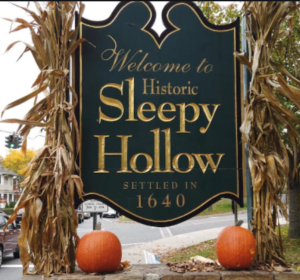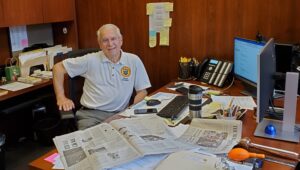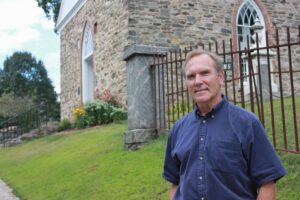 December 10 marked 25 years since the election whereby the citizens of North Tarrytown chose to change the name of their village to Sleepy Hollow. Village trustees ratified the decision on Dec. 11, 1996.
December 10 marked 25 years since the election whereby the citizens of North Tarrytown chose to change the name of their village to Sleepy Hollow. Village trustees ratified the decision on Dec. 11, 1996.
The name Sleepy Hollow was first made famous by New York City-born Washington Irving in his 1820 short story “The Legend of Sleepy Hollow.” In that now-classic ghost story, a Headless Horseman pursues schoolteacher (and romantic interloper) Ichabod Crane, finally throwing his head at Crane. Irving knew the area from traveling here in the late 18th century. The Sleepy Hollow name dates back to the mid-17th century, from Dutch settlers.
Irving loved this area. From 1835 to his death in 1859, his primary residence was Tarrytown, in his home Sunnyside (now a National Historic Site). Irving’s body is buried in the Sleepy Hollow Cemetery. Irving mentioned both the cemetery and the Old Dutch Church, as well as other local places, in “The Legend of Sleepy Hollow.”

The 1996 name-change referendum was not close: 2,013 citizens (an estimated 70% of eligible voters) turned out, with 1,304 voting in favor of the change and only 710 voted not to change. In 1988 a similar referendum had produced the opposite result: 1,322 No votes to 794 Yes votes. And there had been two failed referenda before 1988, according to former North Tarrytown Mayor Phil Zegarelli.
Largely responsible for that turnaround was the Sleepy Hollow Society, formed to promote the name change. “North Tarrytown says you’re the northern part of somewhere else,” said the Society’s then- President Christopher Skelly, a computer programming instructor, during the run-up to the 1996 referendum. “I can’t think of any village with such a nonentity for its name when it is sitting on a treasure of great value, a world-famous identity.”

Lifelong area resident Henry Steiner, now the village historian of Sleepy Hollow, was another active member of the Society. “There were innumerable practical advantages to calling ourselves Sleepy Hollow, but for me, personally, it was a matter of the heart to retrieve that famous name for the village. That is why it was so important to me and why I put all I had into the renaming for eight full years [1988 – 1996].”
Former Mayor Zegarelli noted that the name change “tapped a resource that was always right there.”
Of course, in 1996 the GM Tarrytown plant, long the mainstay of the village’s economy, closed down. That blow seems to have taken some of the energy from the “North Tarrytown Forever” folks, and it increased the fervor of the “Sleepy Hollow” party, who believed the name change would boost the economy.
In the 25 years since the names change, Sleepy Hollow’s brand has been helped by the 1999 film “Sleepy Hollow” (starring Johnny Depp and Christina Ricci) and by the 2013-2017 TV series, also called “Sleepy Hollow.”
Back in 1996, The New York Times noted “few [tourists] have been pausing in the village’s unremarkable downtown or the sites associated with ‘The Legend of Sleepy Hollow.’” That has changed. Anyone who drives down Broadway on an October evening can attest to the number of tourists that show up.
Readers interested in knowing more about Washington Irving and the history of Sleepy Hollow can check out Henry Steiner’s book “The Place Names of Sleepy Hollow and Tarrytown.” Alternately, for those who are still unconvinced, there are places online to buy “North Tarrytown Forever” merchandise.






